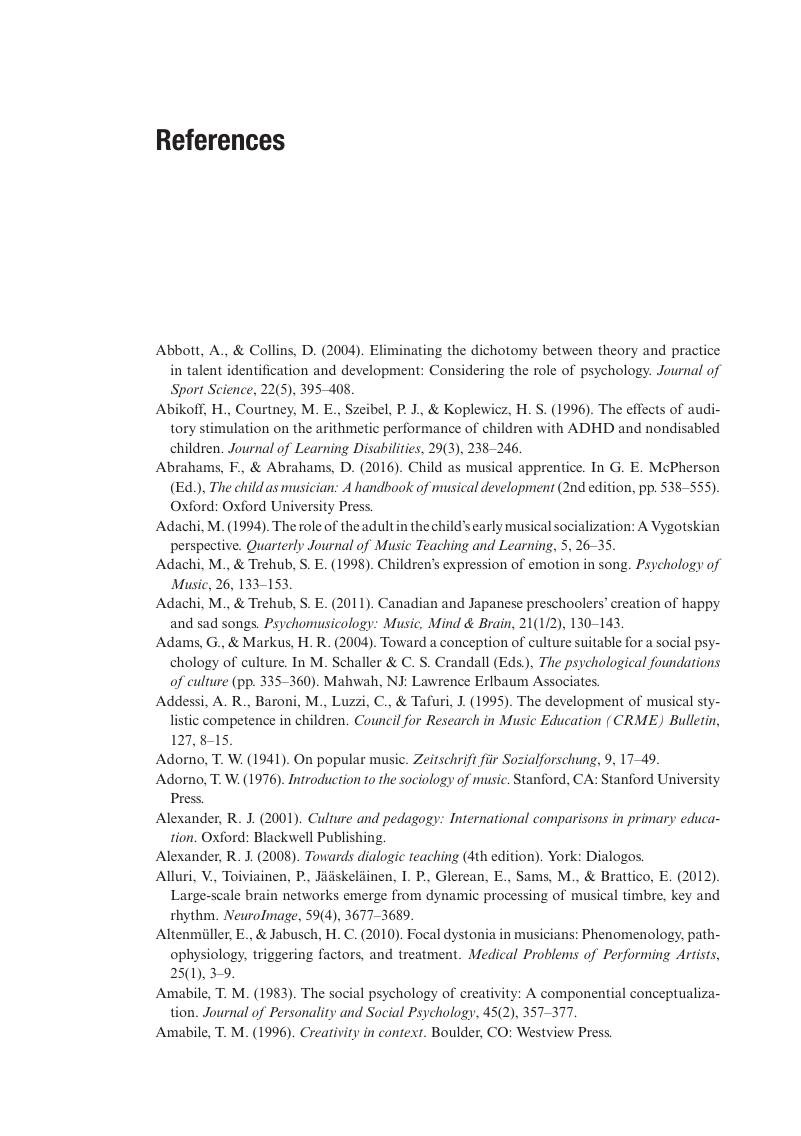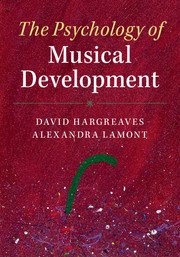Book contents
- The Psychology of Musical Development
- The Psychology of Musical Development
- Copyright page
- Dedication
- Contents
- Figures
- Tables
- Preface
- 1 Introduction
- 2 Musical Development: Theoretical Models, Approaches, and Issues
- 3 Cognition, Perception, and Learning
- 4 Social Development
- 5 Environmental Influences on Ability, Achievement, and Motivation
- 6 Identity, Personality, and Lifestyle
- 7 Affect and Emotion
- 8 Wellbeing and Health
- 9 Afterword
- References
- Index
- References
References
Published online by Cambridge University Press: 12 October 2017
- The Psychology of Musical Development
- The Psychology of Musical Development
- Copyright page
- Dedication
- Contents
- Figures
- Tables
- Preface
- 1 Introduction
- 2 Musical Development: Theoretical Models, Approaches, and Issues
- 3 Cognition, Perception, and Learning
- 4 Social Development
- 5 Environmental Influences on Ability, Achievement, and Motivation
- 6 Identity, Personality, and Lifestyle
- 7 Affect and Emotion
- 8 Wellbeing and Health
- 9 Afterword
- References
- Index
- References
Summary

- Type
- Chapter
- Information
- The Psychology of Musical Development , pp. 278 - 284Publisher: Cambridge University PressPrint publication year: 2017



